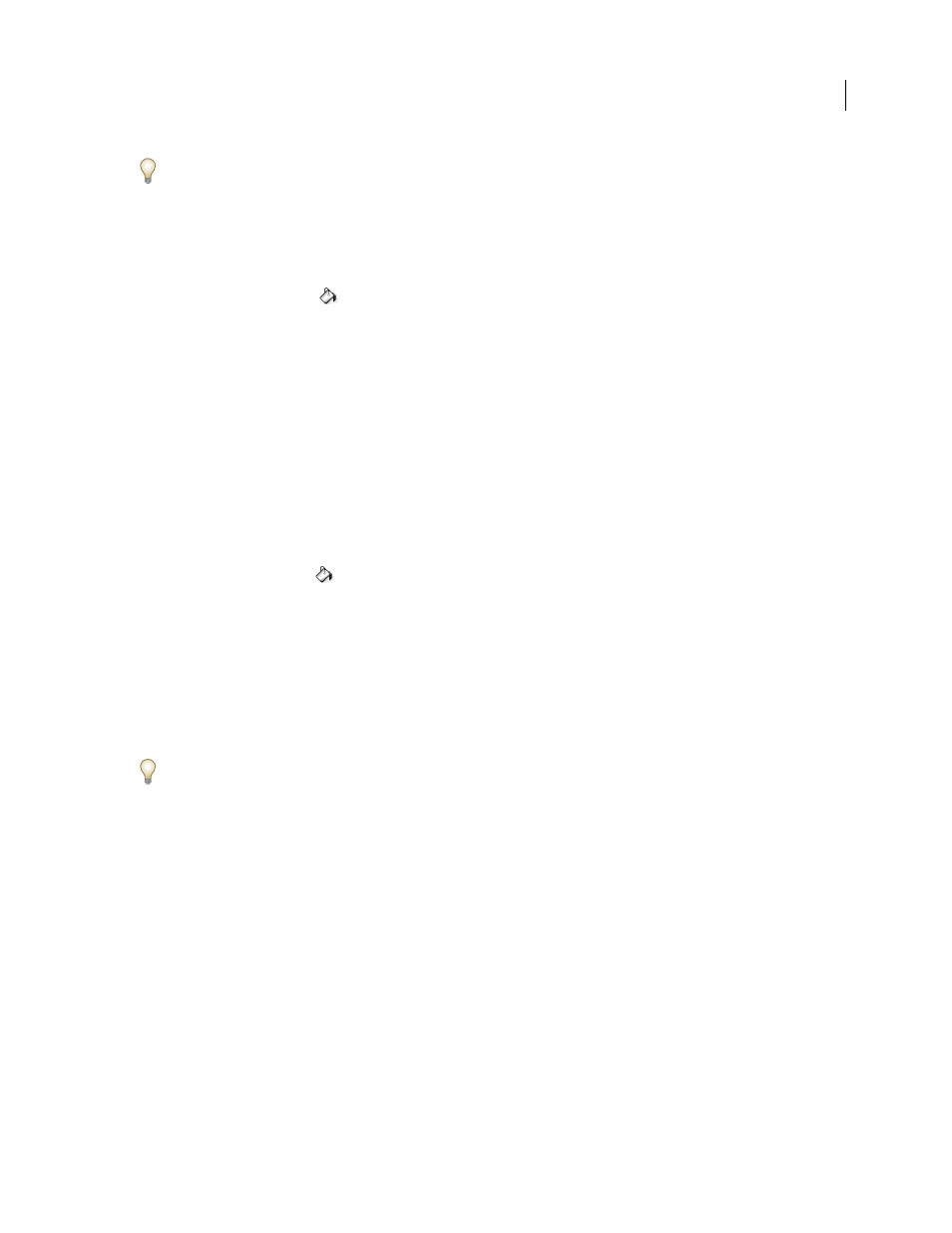Fill the work canvas, Fill a selection with a pattern, Stroke a selection or layer with color – Adobe Photoshop CS3 User Manual
Page 360

PHOTOSHOP CS3
User Guide
353
To apply a foreground color fill only to the areas that contain pixels, press Alt+Shift+Backspace (Windows) or
Option+Shift+Delete (Mac OS). This preserves the transparency of the layer. To apply a background color fill only
to the areas that contain pixels, press Ctrl+Shift+Backspace (Windows) or Command+Shift+Delete (Mac OS).
Fill the work canvas
1
Set the foreground color you want to use for the canvas.
2
Select the Paint Bucket tool
.
3
In the options bar, set Fill to Foreground.
4
Hold down Shift, and click in the work canvas.
Note: You need to be in full screen mode and viewing the menus to fill the work canvas.
Fill a selection with a pattern
1
Select the part of the image you want to fill.
2
Do one of the following:
•
Choose Edit > Fill. In the Fill dialog box, for Use, choose Pattern, select a pattern from the pop-up palette, and
click OK.
If Pattern is dimmed, you need to load a pattern library before you can select this option.
•
Select the Paint Bucket tool
. In the options bar, choose Pattern from the Fill pop-up menu, and select a pattern
from the Pattern pop-up palette. Then click to fill the selected area with the pattern.
Note: You can load additional pattern libraries into the pop-up palette prior to making a selection. (See “Manage pattern
libraries and presets” on page 355.)
Stroke a selection or layer with color
You can use the Stroke command to paint a colored border around a selection, path, or layer. When you create a
border this way, it becomes a rasterized part of the current layer.
To create shape or layer borders that can be turned on or off like overlays and are anti-aliased to create softer-edged
corners and edges, use the Stroke layer effect instead of the Stroke command. See “Layer effects and styles” on
1
Choose a foreground color.
2
Select the area or layer you want to stroke.
3
Choose Edit > Stroke.
4
In the Stroke dialog box, specify the width of the hard-edged border.
5
For Location, specify whether to place the border inside, outside, or centered over the selection or layer bound-
aries.
Note: If the layer contents fill the entire image, a stroke applied outside the layer will not be visible.
6
Specify an opacity and a blending mode. (See “List of blending modes” on page 344.)
7
If you’re working in a layer and want to stroke only areas containing pixels, select the Preserve Transparency
option. (See “Lock layers” on page 289.)
